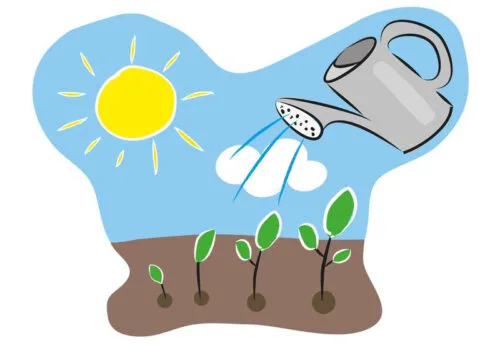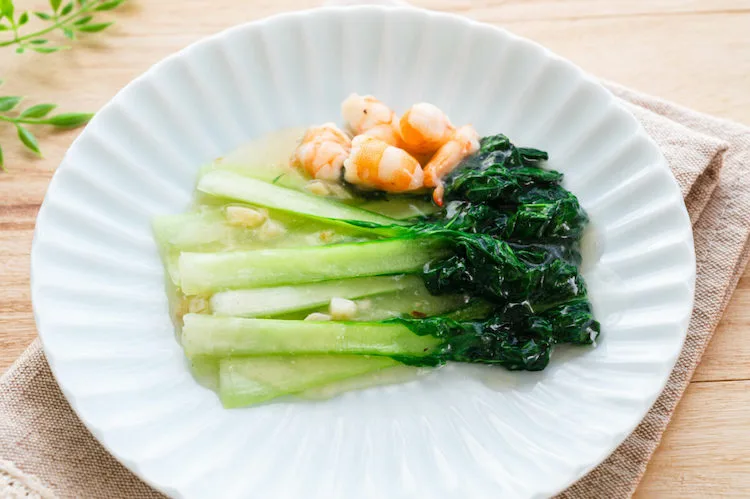Table of contents
Growing Tatsoi
Tatsoi growing is a wonderful way to produce a leafy green vegetable in the tropics. This Asian green is popular for its tasty and healthy broad leaves. Tatsoi (Brassica rapa) originates from Japan, where it has been cultivated since 500 A.D. It belongs to the cabbage family of Brassicas.
Tatsoi is often referred to by other names. These include spinach mustard, spoon mustard and rosette bok choy.
Tatsoi Growing Zone
Tatsoi thrives in a range of climates and is typically grown in USDA Hardiness Zones 4 to 7. In Australia, this translates to temperate and cooler subtropical regions. However, tatsoi can also tolerate slightly warmer climates if grown in the cooler months. Plant in the dry season (late autumn to early winter) to avoid excessive heat.
Tatsoi Growing Season
In the tropics we grow tatsoi as a ‘dry season’ crop. It is a good winter crop in the tropics, whereas in cooler regions, they grow it as a spring and summer crop.
We have not done well in our attempts to grow tatsoi in the tropical summer. It did not thrive. We also found it attracts more mildew and pests at this time of year.
Tatsoi Growing Tips
We have some additional tips to aid you in your growing journey. It is important to know about location, soil, pruning, watering and pest management, so read on:
Location and Soil
Position your plants in full sun. Afterwards, it will thrive in well-drained, sandy soils rich in nitrogen. It also does well outdoors in raised beds in a sunny location.
Fertilising
Apply a rich compost or nitrogen rich fertiliser to the soil prior to planting. You can apply a natural liquid fertiliser such as fish emulsion every month for the best results.
Pruning
Remove damaged foliage from the plant as they appear. Leaves can still be harvested as you need them. However, the mustard flavour of tatsoi descends into bitterness as the plant reaches flowering.
Watering
Water regularly, keeping soil moist but not waterlogged. Try to avoid watering the leaves as best you can, but this is not always possible. Mulch around your plants to keep the soil wet and save water. Sun and water will see your plants grow well.

Pests and Diseases when Growing Tatsoi
Mildew and fungus can be a problem. One tip is to space your plants far enough apart so they are not touching each other, to allow air flow between plants.
Common pests include slugs, cabbage worms, and flea beetles. Remove these bugs when you see them and if you need to, spray regularly with white oil.
Regular application of ‘white oil’ can help address these pests. White oil is an effective organic pesticide that you can make at home.
Growing Tatsoi in Containers
In the tropics and sub-tropics, we recommend you grow in containers. I have a heavy ‘clay’ soil, which is not optimal.
However, my containers have fairly lose well-draining soil, full of organic material. This is better for most vegetables, including tatsoi.
Tatsoi Growing from Seed
It is relatively easy to grow tatsoi from seed.
Tatsoi Seeds
Tatsoi seeds are easy to grow and can be planted directly in the garden or started indoors, depending on your climate.
Tatsoi seeds are commonly available at local garden centres, nurseries, and online stores that specialise in heirloom or Asian vegetable seeds.
Tatsoi growing stages
Time needed: 4 minutes
How to grow tatsoi from seed.
- Timing
Plant your tatsoi seeds at the start of the tropical ‘dry season’.
- Sow Seeds
Plant seeds approx. 1cm (or 1/2in) deep and space them 5cm (2in) apart.
- Sun and water
Position your tatsoi in full sun and make sure you water regularly. It needs approx. 1 inch (2.5cm) each week.
- Germinate
Seeds will germinate in just 4 to 8 days.
- Thin Out
Thin out your seedlings until they are 25cm (10in) apart.
- Harvest
Once leaves are 10cm (4in) long you can start harvesting them. Cut off leaves at the base with scissors. This is a ‘cut and come again’ plant, so it will keep rewarding you if you care for it.
Tatsoi bolting
When tatsoi bolts, it means that the plant is beginning to flower and set seed prematurely. Bolting in tatsoi can be triggered by various factors, including temperature fluctuations and day length. Here’s what you can do if your tatsoi is bolting:
Tatsoi prefers cool temperatures and is sensitive to heat. When temperatures rise suddenly, especially if they fluctuate between cool and warm, tatsoi may bolt.
Tatsoi Recipe
The use of Tatsoi in cooking is as diverse as most cooking greens, however it does lend itself to asian inspired dishes and is delicious simply tossed in a pan with soy sauce, ginger and garlic.

Tatsoi Growing Health Benefits
The best thing about growing tatsoi is having this tasty vegetable to eat. Indeed, tatsoi is rich in beta carotene, and Vitamins A, C, and K as well as calcium, potassium, phosphorous, and iron.
In addition, it is an excellent source of micronutrients and is versatile like more popular leafy greens. It has earned the nickname ‘vitamin green’.
Weight Loss
Leafy greens such as this are excellent for weight loss. They are low in sugar and carbohydrate and are filling at the same time.
Fibre
Tatsoi plants are an excellent source of dietary fibre. Consequently, this non-digestible fibre promotes healthy bowel movements.
Immune System
The high levels of Vitamin A helps you maintain a strong immune system.
Antioxidants
Tatsoi is full of disease-fighting antioxidants that reduce damage to cells in your body.
Prebiotics
Tatsoi contains prebiotics that pass through the gastrointestinal tract and remain undigested until they reach the colon. Consequently, these prebiotics act as food for healthy gut bacteria.
Thank you for reading and all the best with your tatsoi growing.
Other Vegetables
- Capsicum
- Cucumber
- Eggplant
- Jicama
- Kangkong
- Malabar Spinach
- Pak Choi
- Perpetual Spinach
- Pumpkin Growing
- Snake Beans
- Sweet Potato



Comments
2 responses to “Tatsoi Growing Guide for Gardeners”
[…] Tatsoi […]
[…] Tatsoi […]